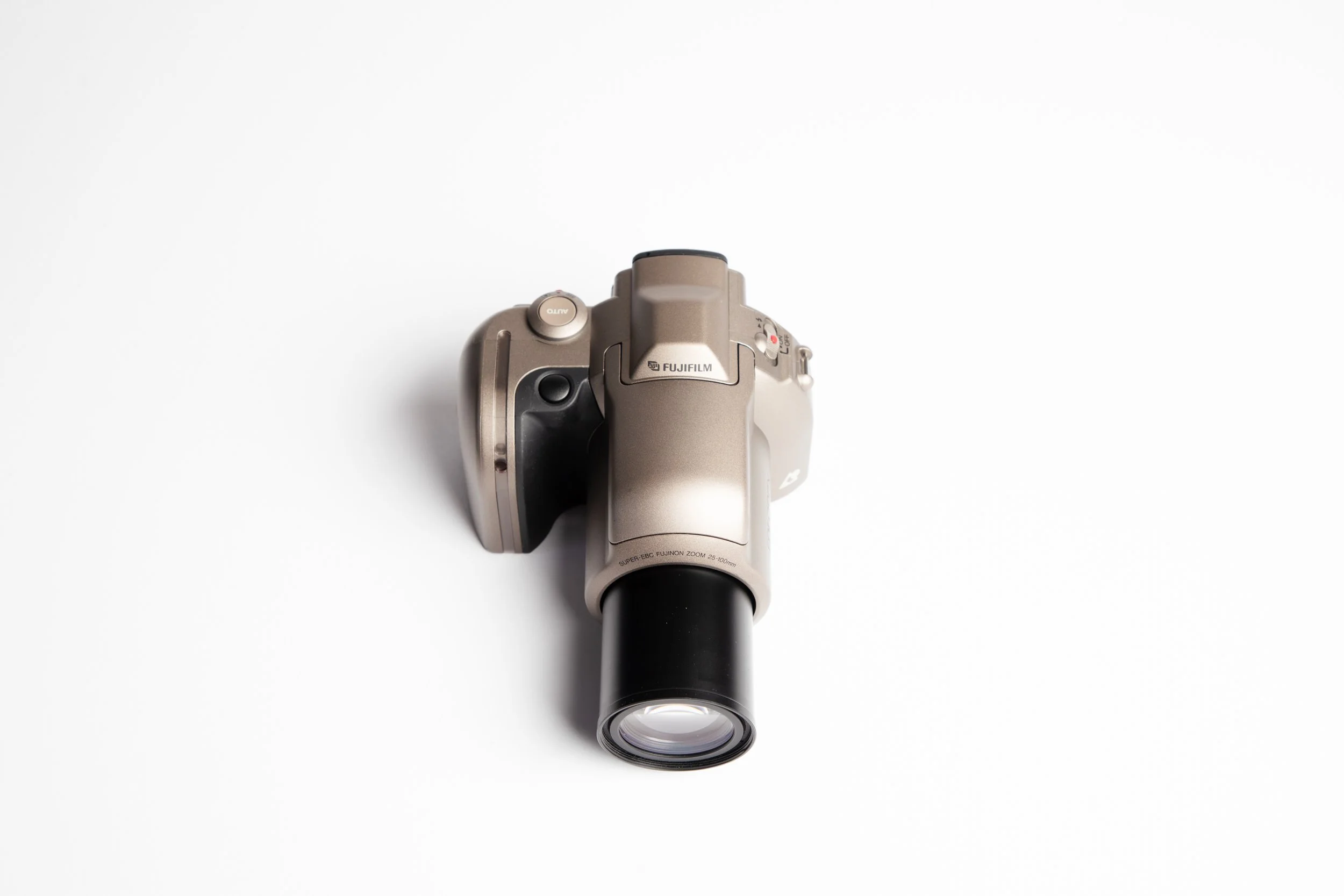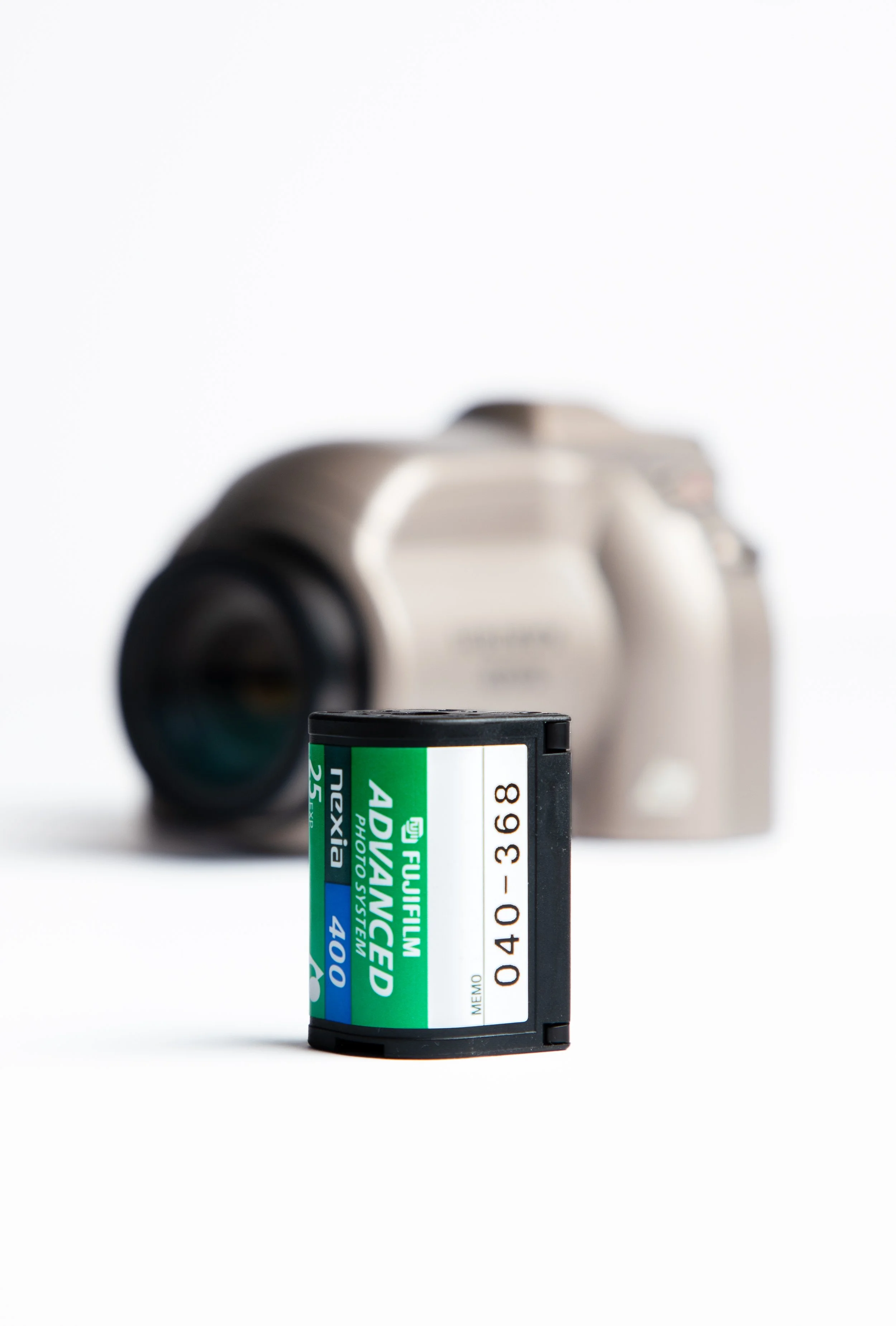The forgotten format
Let’s start with a quick introduction to APS film, and the forgotten format.
APS or Advanced Photo System, was first introduced to the consumer marked in 1996. It was a common believe spred across different manufacturers, that the standard 35mm format - was too difficult, for the regular consumer.
They wanted to optimize the way, we all used film:
- How we load film into our cameras, no need for the consumer to struggle with dragging a film strip across, and fumble around to get it in the snip correctly. Just insert the film “cassette” and it was ready to go.
- Make storage of negatives easier, by letting the negatives stay inside the protected canister (they made a whole system for the consumer, to store their APS negatives with the canisters, inside a box).
If you wanted to swap film mid roll, that was an option as well. With indicators at the bottom of the cassette, you would easily tell if the roll was unexposed (indicated with a circle), partly exposed (indicated with a half circle), fully exposed, but not yet processed (indicated with a cross) and processed (indicated with a square).
Fujifilm, Kodak, Konica, Minolta, Nikon like a couple of other brands jumped on the APS train, and made brand new cameras for the system. Mostly point-and-shoot cameras for “amateurs”, which was the target audience. Besides the P&S cameras, Five SLR (single lens reflects) saw the light of day, from Canon, Minolta and Nikon.
The days of APS were short lived, it never really caught on with the professional photographers, since the negatives were smaller than the regular 35mm. And with the digital age of cameras, starting to take form from the early 2000s, the APS format was doomed. In 2004 Kodak announced the end of APS Film, with Fujifilm and Kodak being the two last manufacturers, finally closing the production down in 2011.
A diagram of the different APS formats vs 35mm
The APS system, allowed the consumer to switch between three different crop modes, with a flick of a switch. The APS-H (High definition) with a aspect ratio of 16:9, APS-C (Classic) Aspect ratio 3:2 and APS-P (Panorama) 3:1. The “pano” crop was the whole reason I looked into this forgotten format, the hunt for a “cheaper” solution for panorama shots. With the film stock discontinued, and every roll still left - totally expired, the cheap solution part went straight out of the window. Instead this was a fun educational trip, down into the rabbit hole of APS film.
The Fujifilm Fotonex 4000sl
I came across a good deal, and ended up buying the Fujifilm Fotonex 4000SL, which to my knowledge was the name in Europe, the name was different in USA, and Japan. A SLR without the opportunity to change lenses. At the beginning I was searching for Minolta’s Vectiv model, and still are - if there ever comes an amazing deal with a set of lenses my way. Fuji made this model in close contact with Olympus, and there are som Olympus 35mm camera out there, that looks a bit like the Fotonex 4000sl. I really enjoy the look, and feel of the 4000sl. The shapes are amazing - but the ergonomic sucks, when holding the camera in your hand.
A shot of the 4000sl, with a roll of Fujifilm nexia 400
With every roll being too old, we have to compensate when shooting it. There are a couple of APS camera models that let us control the ISO dial, but sadly mine didn’t - so I had to come up with another clever way to “trick” the camera’s internal lightmeter. I ended up using an ND filter in front of the lens.
Simple really, just hold the ND filter in front of the lens, while taking a reading, then remove the filter and take the shot. Or so I thought. when receiving my negatives back, I noticed that the focus was bit off. And I don’t know if the problem is because of the reading/focusing through the ND filter, or a fault in the camera - more testing will be needed. The pictures ended up being exposed okay, with a little of a touch up in lightroom afterwards. But see for yourself below. This is definitely not my last time, playing around with the APS format.
The photos above were all shot in Nørresundby, and the scans are all lab scans, since at the moment, I haven’t got the setup at home for scanning APS film.
If you have any questions, feel free to write below.












